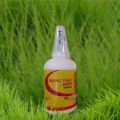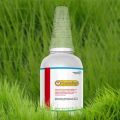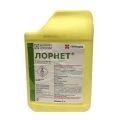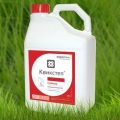Instructions for use of the herbicide Magnum, safety measures and analogues
Magnum is a systemic herbicide that penetrates weeds and acts at the cellular level. The drug is recommended for use on crops of grain and flax. This type of herbicide is not terrible for these crops. The active ingredient in the composition acts only on weeds. The herbicide is used in tank mixes together with chemicals of another class for more effective destruction of vegetation that interferes with the growth of main crops.
Content
- 1 Composition, form of release and purpose
- 2 The mechanism of action of the drug Magnum
- 3 Impact speed
- 4 Protective period
- 5 Main positive and negative aspects
- 6 Working fluid consumption
- 7 Instructions for the preparation and use of the working solution
- 8 Precautions for use
- 9 Phytotoxicity
- 10 Possibility of emergence of resistance
- 11 Compatibility
- 12 Terms and conditions of storage of the drug
- 13 Similar means
Composition, form of release and purpose
Magnum or Magnum-Super is an effective means for the destruction of annual and a number of perennial dicotyledonous weeds in fields sown with grain (winter and spring) and flax. The herbicide even copes with field thistle and sow thistle.
The drug is produced by the Russian company August. It can be used on large farms for aerial processing of fields. The active substance - metsulfuron-methyl - belongs to the class of systemic herbicides - sulfonylureas. This main component of the drug destroys weeds at the cellular level.
The herbicide is available in the form of water-dispersible granules. Packaging - plastic bottles with a volume of 100 grams.
The mechanism of action of the drug Magnum
The active substance is absorbed by young leaves and roots of weeds, penetrating inside, and suppresses the formation of substances necessary for DNA biosynthesis. As a result of this biochemical process, cell division stops, the plant dies.
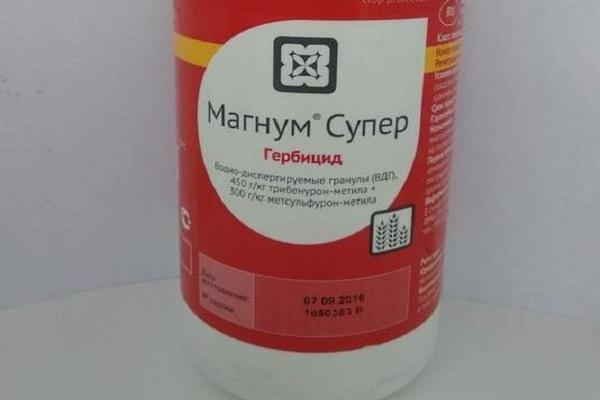
Impact speed
Full penetration of the weeds into the interior occurs 4 hours after treatment. The active substance begins to act immediately after entering the plant organs. After a few hours, the weeds stop growing. They die - within 1-3 weeks after processing. Plants exhibit chlorosis, reddish leaf color, necrosis, and apical bud death.
Protective period
The drug of selective and systemic action destroys growing weeds throughout the growing season.
The first noticeable symptoms of exposure to a chemical agent appear 2-3 days after treatment.
It is advisable to use the herbicide before sowing, before or after the emergence of the main crops. The drug is effective in all weather conditions. The grains themselves are resistant to this type of herbicide.

Main positive and negative aspects
Magnum benefits:
- convenient packaging;
- economical consumption;
- high efficiency;
- is selectively active;
- can be used at the stage of 2-3 leaves and until the end of tillering;
- destroys all major weeds in grain crops.
Cons of using:
- with prolonged use, resistance may appear;
- undesirable for use on alkaline soils (long half-life);
- destroys sensitive vegetable crops growing near the sprayer;
- it is impossible to spray plantings by air method near fishery reservoirs;
- after cereals for next year, vegetables are planted only after deep plowing;
- it is recommended to adhere to restrictions on crop rotation.
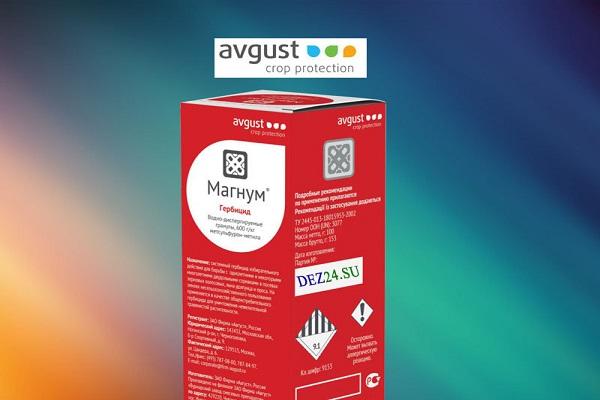
Working fluid consumption
The drug must be dissolved in water before use. Working fluid consumption - 200-300 l / ha (25-50 l / ha for aerial spraying). The rate of the preparation is 0.005-0.01 kg / ha.
Instructions for the preparation and use of the working solution
On the day of applying the herbicide, a working solution is prepared. The drug is used in spring or during the period of active growth of weeds. The solution can be poured into the tank of a fine dispersion sprayer.
First, a masterbatch is prepared in a small container from a certain amount of herbicide, calculated for the treated area. The spray tank is half filled with water, the agitator is turned on and the mother liquor is poured in. Then the container is filled with liquid to the required volume.
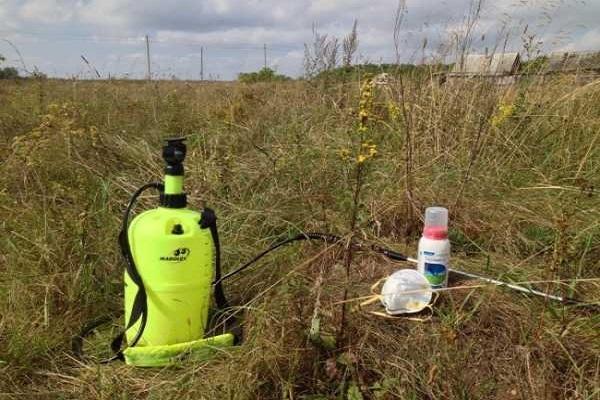
Precautions for use
Magnum is not toxic to humans, however, when preparing the solution and while working with the herbicide mixture, you must follow the precautions. Do not inhale vapors or drink the herbicide dissolved in water. Processing must be carried out in a respirator, protective suit. After working with the herbicidal composition, you need to wash your face and hands with warm water and soap, rinse your mouth with a soda solution.
Phytotoxicity
The herbicide is selective. Phytotoxic to weeds. Does not show toxicity to cereals and flax. Can destroy plantings of sunflowers, buckwheat and vegetables.
Possibility of emergence of resistance
The drug can only show resistance after 3-5 seasons of continuous use.
To prevent addiction, Magnum should be used alternately with herbicides of other chemical classes.
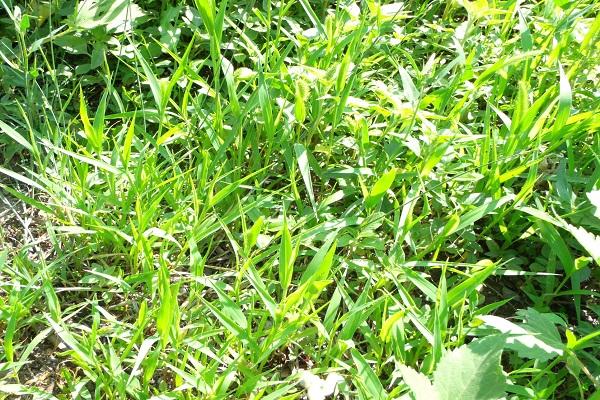
Compatibility
To prepare the mixture during the processing of grain crops, in addition to Magnum, other herbicides can be used: Demeter, Ballerina, Zernomax, Eraser extra, Herbitox. On flax plantings, the drug can be used with the following chemicals: Herbitox, Lontrel-300, Zellek-Super, Miura.
The herbicide is used on uncultivated soils together with the Tornado herbicide. Magnum is poured into the sprayer tank first when preparing the working mixture.
Terms and conditions of storage of the drug
In a tightly closed or unopened original packaging, the herbicide does not lose its characteristics for 5 years from the date of manufacture. The drug must be stored in a special room for pesticides. The optimum storage temperature is 5-25 degrees above zero. The herbicide solution must be fully used on the day of preparation. With longer storage, the mixture loses its properties.

Similar means
On sale you can find other herbicidal preparations based on the substance metsulfuron-methyl. For example, Terramet, Laren Pro, Grench. These herbicides are selectively used to protect crops from weeds.


